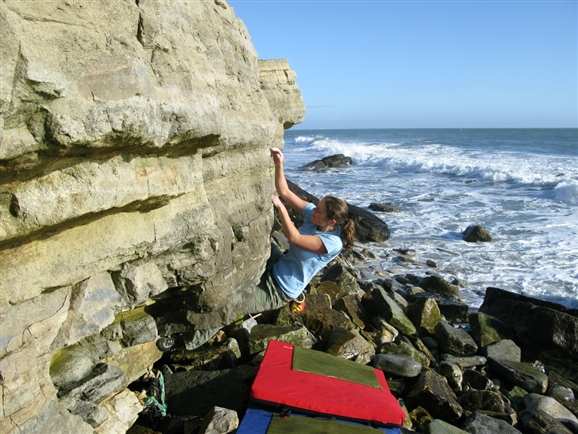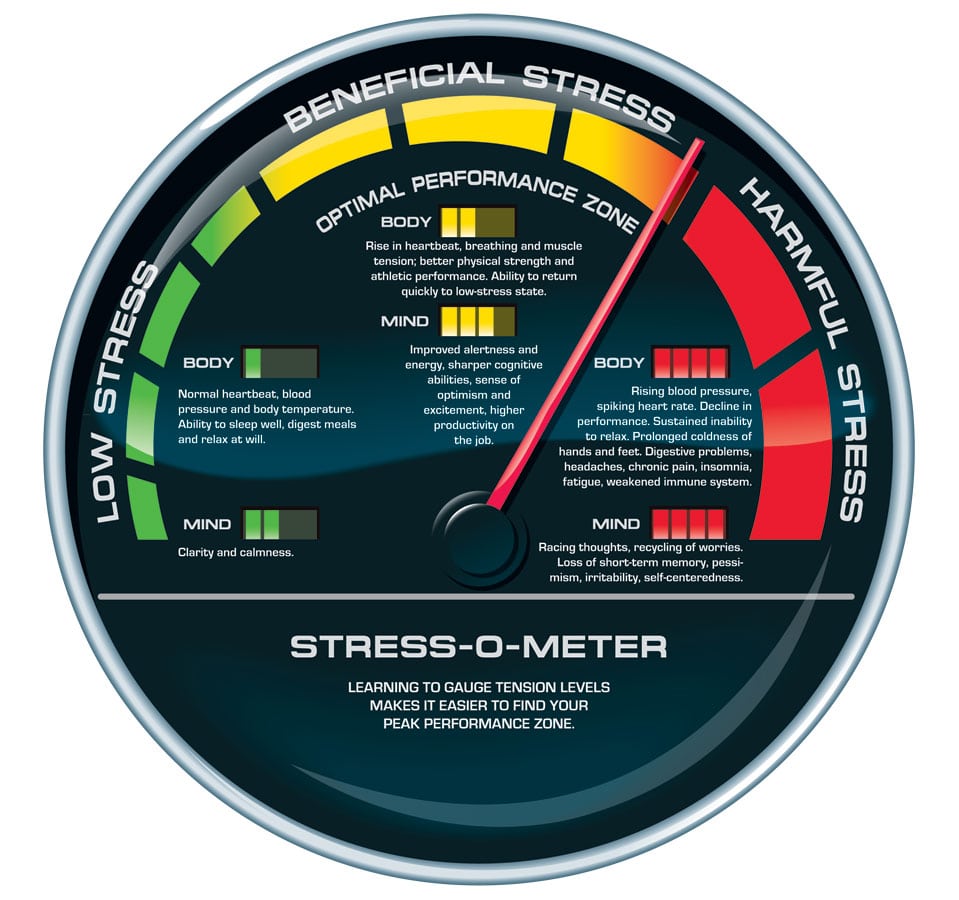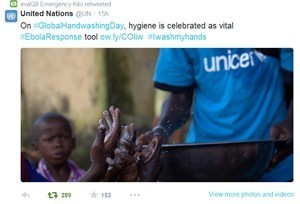 What a glorious weekend after the violent thunderstorms on Friday. I wish I could be out there with friends and family rock climbing near Portland. Instead, in support of our daughter sitting A-level exams next week, I am home bound, exercising …. well, this is precisely where I want to begin today’s resilience blog post.
What a glorious weekend after the violent thunderstorms on Friday. I wish I could be out there with friends and family rock climbing near Portland. Instead, in support of our daughter sitting A-level exams next week, I am home bound, exercising …. well, this is precisely where I want to begin today’s resilience blog post.
Exerting my imagination, dissolving this grey-white WordPress screen into majestic sea cliffs, my fingers racking up miles typing at speed while trying to come up with a way to bridge the massive gap in my initial post on what is resilience – none of this, of course, counts as fitness. And that is, obviously, not only essential for health but also a core capacity in resilience, one glaringly omitted in my earlier post. Psychology focussed approaches to resilience by their very nature tend to ‘get stuck’ in aspects of mental fitness/health and thus only perpetuate the already pervasive mind-body dualisms. Resilience on the other hand addresses and integrates much wider and diverse topics and, naturally, must include physical fitness. But why exactly and what is the evidence?
Mastering Physical Challenges builds Strength and Resilience
Physical training – exercise – is good for your health. Yes, that’s nothing new and you’ve heard it all before but there is a crucial qualifier: if done right – but that’s not all.  It’s rather tricky actually and quite a bit of a paradox for you have to challenge and tax yourself yet not overly so, remaining sensitive to personal limits. It’s no easy task to continually hit your personal Goldilocks’ sweet spot of ‘just right’ especailly as it changes over time and with context.
It’s rather tricky actually and quite a bit of a paradox for you have to challenge and tax yourself yet not overly so, remaining sensitive to personal limits. It’s no easy task to continually hit your personal Goldilocks’ sweet spot of ‘just right’ especailly as it changes over time and with context.
The evidence in favor of exercise is of course pretty strong: numerous studies have repeatedly shown that physical fitness enhances general health, may prevent or reduce the debilitating effects of high blood pressure, cardiovascular disease, stroke, diabetes, arthritis and a plethora of other chronic disorders. In addition, mastering physical challenges can improve mood, cognition and emotional resilience.
To illustrate, let’s go a bit extreme and take a closer look at Philpott’s (2002) study of the Vietnam War veteran Jim Thompson, America’s longest-held prisoner of war.
Resilience + Physical Fitness Case Study: Extreme Survival in Captivity with the ‘Daily Dozen’
The story starts with Lew Meyer, a civilian firefighter working for the military in South Vietnam. He was captured in 1968 along with twelve others and, after a five month long arduous march, imprisoned in solitary confinement in a dark 8-by-4 foot cell. Meyer exercised whenever possible even when feeling tired or weak, jogging in tiny circles around his cell or doing isometric exercises (see Often Forgotten Isometric Excerices). He continued his routines even when shackled in leg locks, substituting sit-ups for squat jumps and jumping jacks. When he was transferred to a larger cell with roommates, Meyer increased his routines and included his cellmates. At the height of his training Meyer could do 64 one-arm push-ups! One year into captivity they received another cellmate: Jim Thompson, a Green Beret, starved and tortured for five years, weighed less than 100 pounds.
“This guy is dead, I thought… I didn’t know how he stood up, how he breathed, how he did anything…. It took him half an hour to stand… talk about a gutsy guy” (Meyer in Philpott, 2002).
On their first morning together, Thompson tried to join Meyer but was too weak. He could not do a single push-up. Meyer adapted his routine and gradually coached Thompson back to health. Initially, Thompson could only tolerate deep breathing exercises. Then some bending and stretching. Within six month, Thompson completed the daily dozen and that was just the beginning. In time, the two men devised an escape plan. They planned and trained for over a year, making their exercise routine more and more challenging. Stacking their beds on top of each another, they ran laps around their tiny cell. As a group, they held ‘Iron Man’ type contests, one cellmate winning with a count of 501 push-ups, another with 1615 sit-ups. Strenuous exercise was not just a hobby or a way to pass time for these POW’s. It was a necessity. They felt better and slept better; it provided structure and purpose to their days which enhanced confidence. It saved their lives. Meyer describes how other prisoners who did not make any physical effort “all ended up dying within a few years after release.”
This story is undoubtedly extraordinary and quite outside normal life. However….
Physical Exercise builds Resilience in Civilians too
You do not need to be faced with severely stressful circumstances to benefit from exercise. The Mayo Clinic lists 7 benefits of regular physical excercicse which shows that exercising be fun but it boosts your energy, improves mood, helps manage weight, combats chronic disease, promotes better sleep and it even may improve your sex life.
As if that was not incentive enough, there is even more to consider about…
Exercise, Resilience and Neurogenesis in the Brain
Aerobic exercises can have stress-protective, anti-depressive and anxiety-reducing effects in two ways through neurobiological and hormonal pathways. First, exercise increa ses the concentrations of neurotransmitters in the brain such as endorphins that improve mood and serotonin and dopamine that lessen depression. It can also enhance neurogenesis, the making of new brain cells by turning on relevant genes. Second, regular exercise can protect against hormonal effects of chronic stress by dampening the HPA axis and lowering cortisol production which means that the brain is less exposed to this this neuron damaging stress hormone. However, not all studies agree and some have reported negative effects which may point towards the complexities of individual differences, flagging up my earlier point about the importance of tailored ‘sensible’ exercise, finding what is ‘just right’ for you and staying sensitive to that this may change over time. So you will be asking at this stage…
ses the concentrations of neurotransmitters in the brain such as endorphins that improve mood and serotonin and dopamine that lessen depression. It can also enhance neurogenesis, the making of new brain cells by turning on relevant genes. Second, regular exercise can protect against hormonal effects of chronic stress by dampening the HPA axis and lowering cortisol production which means that the brain is less exposed to this this neuron damaging stress hormone. However, not all studies agree and some have reported negative effects which may point towards the complexities of individual differences, flagging up my earlier point about the importance of tailored ‘sensible’ exercise, finding what is ‘just right’ for you and staying sensitive to that this may change over time. So you will be asking at this stage…
How can I use Exercise to increase my Resilience?
I have some tough but also plenty of encouraging news and, importantly, plenty of practical resources for you as is the norm of this blog. Building resilience typically means that you have to go beyond simply ‘routine maintenance’ exercises to fully tap the ‘good stressor’ effect of physical exercise. You have to challenge yourself – but sensibly so. First, I suggest you check out MindTools Stress Management including the Holmes & Rahe Stress Scale as tools to gain a better insight into good/bad and hidden stress you may never have even thought about. Next, have a look at the NHS’s How Fit Are You self-test or another good resource is the Norwegian University of Science and Technology’s Fitness Calculator. Of course these are no substitutes for getting professional advice from health care and fitness professionals, but it’s a start. One strategy to tap your optimal physical stress level is known simply as “stress inoculation” – first studied by Lyons&Parker (2007). It involves continually pushing the healthy limits of physical strength and endurance. Don’t confuse this with Stress Innoculation Training (SIT) which is a highly successful psychological method of cognitive restructuring (a form of CBT) to deal with mental stress which I will address in a later post. For the moment I want to stay at the physical level and one way of measuring fitness/stress is via your heart rate.
Your heart rate as indicator and how to calculate ceiling and floor for effective exercise
One commonly used way is to first calculate your maximum heart rate by subtracting your age from 220. According to the Center for Disease Control, at 50-70% of your maximum heart rate (MHR) lies what is called the moderate intensity heart zone so you calculate
MHR x 0.50 and MHR x 0.70 = floor/ceiling moderate intensity heart zone
The resulting number represents your optimal heart rate range for moderate intensity exercise such as a brisk walk, water aerobics, doubles tennis, dancing or gardening.
To reach the vigorous intensity heart zone you will have to exercise at 70-85% MHR; so take
MHR x 0.70 and MHR x 0.85 = floor/ceiling vigorous intensity heart zone
Exceeding 85% MHR will not provide any additional benefits and may place an unhealthy amount of strain on your body.
Also, please note that these calculations are only estimates and may vary considerably from person to person also with ethnicity and especially if you are on certain medication or suffer from heart related conditions. Always seek medical advice before embarking on a rigorous physical training programme.
In addition, keep in mind that the above is rather simplistic. Other methods (i.e. see TopEndSports) not only consider your MHR or HRmax, but also monitor your resting heart rate HRrest which gets lower as a result of your heart becoming a more efficient pump through regular exercise. Also, sport organizations such as British Cycling have more sophisticated measures that do not simply start from a ‘generic’ maximum heart rate calculation but more accurately use an individual’s performance as a baseline to calculate several distinct training zones. Do some research and talk to sports professionals that can advise and find out what makes sense for you.
Pysical Exercise and Resilience – other considerations and useful tips
Naturally, this topic is a lo t more complex than can be crammed into a single blog post. You must consider other important questions related to physical fitness such as: is it best for you to exercise alone or with others (or a bit of both), should you hire a trainer so that you can learn proper exercise technique and what about cross-training, combining exercises of multiple disciplines?
t more complex than can be crammed into a single blog post. You must consider other important questions related to physical fitness such as: is it best for you to exercise alone or with others (or a bit of both), should you hire a trainer so that you can learn proper exercise technique and what about cross-training, combining exercises of multiple disciplines?
There are many excellent books on these topics and information is also available online from reputable sources. However, don’t get stuck and buried in literature. Much more important is to go and just do – explore fitness actively. Although building physical fitness and personal resilience takes planning, consistency, perseverance and the willingness to live with discomfort it also based on simple drive and desire.
And so, before I go for a long and brisk walk myself now, enjoying familiar views of Fulham and Putney along the Thames rather than the more spectacular cliffs of Portland which will have to wait for another time, I leave you with some final tips on how to start your new exercise regimen, on how to build and expand your personal resilience:
- learn as much about your body and physical fitness as you can to improve your understanding and find new ways of well being
- check and discuss with your health professional before starting an exercise program
- try as many different exercises as you can and consider the benefits of cross-training
- set realistic goals and stick to them flexibly. Log your workouts to track your progress and celebrate success
- if a 150 minute/week workout is too challenging, start small and break it down; i.e. British Heart Foundation “Time to get moving” or see videos like Dr Dave’s Daily Dozen Exercises Isometric Arms you can do while sitting at your desk
- consider working with an experienced trainer as you build and expand your fitness
- gradually increase the intensity of your cardiovascular and strength training but sensibly so
- allow for proper recovery between sessions
- practise healthy eating and sleeping habits
- find friends and family to support and join
- notice and focus on the positive feelings and greater sense of capacity and self-esteem you are building through exercise and try to reach a point where physical fitness simply becomes part of who you are
Have a great weekend.
Monika
thank you for sharing, raising awareness for Emergency Preparedness!
Cited resources and additional references:
- British Army Fitness App / MOD: Get fit for the army (PDF)
- British Heart Foundation: How your heart works
- Lyons, D.M. & Parker, K.J. (2007) Stress inoculation-induced indications of resilience in monkeys. Journal of Traumatic Stress, 20, 423-433
- Philpott, T. (2002) Glory denied: The saga of Vietnman veteran Jim Thompson, America’s longest held prisoner of war. New York, NY: Plume Books
- Stress Management Toolkit for Employers PDF (+ more from HSE Gov UK)
- The official British Army fitness programme (Guardian article and links)
US Army Physical Fitness Manual FM21-20; PDF accessed 5/6/15
- Whitfield, B.e. (2013) A Historical Review and Analysis of Army Physical Readiness Training and Assessment. Combat Studies Institute Press, US Army Combined Arms Center Fort Leavenworth, Kansas (PDF accessed 5/6/15)
For more EVAQ8 blog simply use the right hand navigation. For emergency kits and practical resources use the top navigation. For FREE resources head over to our Preparedness Hub and find out why we use humour. If you like this post, please share it to help raise awareness for Emergency and Disaster Preparedness. Thank you!
Find EVAQ8 on social media, like and follow us!








 Easily fits in your handbag or satchel and can be emptied/refilled as needed without much hassle. For instant cool, put it on your neck or chest, even under your feet and the crooks of your elbows.
Easily fits in your handbag or satchel and can be emptied/refilled as needed without much hassle. For instant cool, put it on your neck or chest, even under your feet and the crooks of your elbows.


 t more complex than can be crammed into a single blog post. You must consider other important questions related to physical fitness such as: is it best for you to exercise alone or with others (or a bit of both), should you hire a trainer so that you can learn proper exercise technique and what about cross-training, combining exercises of multiple disciplines?
t more complex than can be crammed into a single blog post. You must consider other important questions related to physical fitness such as: is it best for you to exercise alone or with others (or a bit of both), should you hire a trainer so that you can learn proper exercise technique and what about cross-training, combining exercises of multiple disciplines?





 resh water and above average temperatures means an ideal environment for mosquitoes. But it’s not just the rural areas that suffer. Mosquitoes are encroaching ever closer and make their home in sub-urban and urban spaces.
resh water and above average temperatures means an ideal environment for mosquitoes. But it’s not just the rural areas that suffer. Mosquitoes are encroaching ever closer and make their home in sub-urban and urban spaces. The common house mosquito Culex pipiens (small, beige/brown 3-7 mm body length) is a biter and well-established. The aptly named subspecies Culex pipiens molestus has adapted to life in the underground – the London Underground and other underground railways. It is known as a vector for meningitis and urticaria and has recently been identified as a potential vector of West Nile Virus (WNV).
The common house mosquito Culex pipiens (small, beige/brown 3-7 mm body length) is a biter and well-established. The aptly named subspecies Culex pipiens molestus has adapted to life in the underground – the London Underground and other underground railways. It is known as a vector for meningitis and urticaria and has recently been identified as a potential vector of West Nile Virus (WNV).





